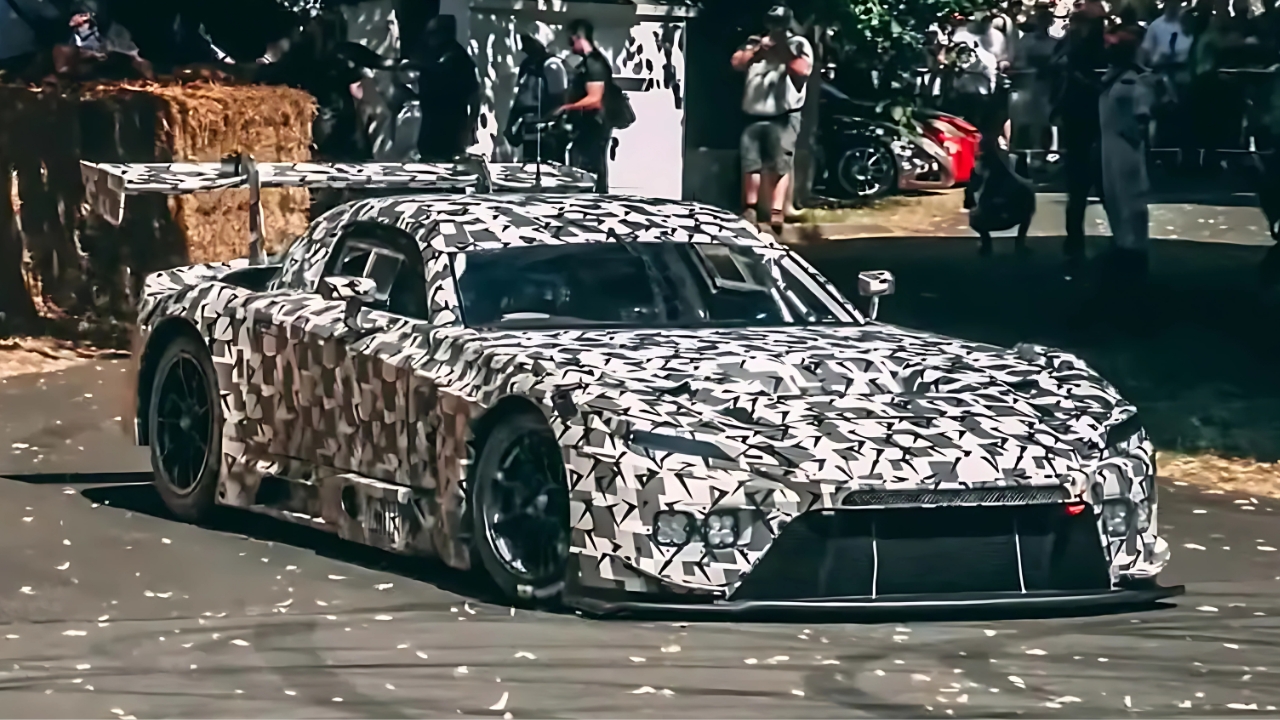Lexus LFR: You’re an F1 driver who regularly pilots machines capable of hitting 200+ mph on race tracks around the world. Your everyday office involves dealing with incredible g-forces, split-second decisions, and cars engineered to the absolute limit of what’s physically possible. So what does it take to genuinely impress someone like that?
The answer came roaring up the Goodwood hill climb recently when Haas F1 drivers Esteban Ocon and Oliver Bearman got behind the wheel of Toyota and Lexus’s latest creation—and both came away absolutely stunned.
The Moment That Made Headlines
After swapping between the road-going Lexus LFR and its GT3 racing sibling at the Goodwood Festival of Speed, Ocon’s reaction was immediate and genuine: “It was a lot of fun. It’s a fantastic car to drive, honestly… it’s incredibly fast, incredibly capable.”
Coming from someone whose day job involves wrestling 1,000-horsepower hybrid F1 monsters around Monaco, that’s not faint praise—that’s a genuine endorsement that should make any car enthusiast sit up and take notice.
What makes this moment even more significant is the backstory. Toyota recently became an “Official Technical Partner” of Haas, with their Gazoo Racing division providing support in design, aerodynamics, and manufacturing. This isn’t just a marketing partnership—it’s a genuine technical collaboration where racing expertise flows both ways.
The LFA Legacy Lives On
To understand why the LFR is such a big deal, we need to talk about its legendary predecessor. The original Lexus LFA wasn’t just a supercar—it was a statement of intent that completely redefined what the world expected from Japanese engineering.
That car’s naturally aspirated V10 engine was co-developed with Yamaha and produced what Toyota engineers called “the roar of an angel.” The sound was so precisely engineered that it could literally shatter champagne glasses through resonance frequency. Only 500 were ever made, each taking months to hand-build and selling for $375,000.
But here’s what made the LFA truly special: it wasn’t trying to be the fastest or the most powerful. It was trying to be perfect. Every component, from the carbon fiber body to the digital instrument cluster that could actually keep up with the engine’s incredibly quick rev changes, was obsessively engineered.
What Makes the LFR Different
The new LFR takes everything that made the LFA special and pushes it even further. While we’re still waiting for official specifications, the rumors are mouthwatering. Word on the street suggests a twin-turbo V8 hybrid system pumping out as much as 900 horsepower.
But power figures only tell part of the story. What’s really exciting is the development philosophy. Unlike many supercars that are designed first and then adapted for racing, Toyota’s approach this time is completely different—they’re building the race car and road car simultaneously from the ground up.
David Wilson from Toyota Racing Development explained the significance perfectly back in 2022: “Before you put your first line on paper, you decide you’re going to race that car, and that shapes the design parameters, the performance parameters of that production car.”
Real-World Performance That Matters
The proof, as they say, is in the pudding. Spy photographers have reported the LFR prototype lapping the Nürburgring in under eight minutes. To put that in perspective, that’s faster than most dedicated supercars and approaching the territory of hardcore track weapons.
But what’s perhaps more impressive is how the car behaves in everyday situations. Ocon specifically mentioned the comfort aspect, noting how he got “a bit more comfort this morning than yesterday” when switching from the race car to the road version. This suggests Lexus has managed to create something that can be genuinely usable day-to-day while still delivering mind-bending performance when you want it.
The Sound of Engineering Poetry
One aspect that has car enthusiasts particularly excited is the exhaust note. Recent videos from Goodwood seem to confirm rumors of a hybrid twin-turbo V8 setup, and the sound is already drawing comparisons to the LFA’s legendary soundtrack.
While it might not have the spine-tingling wail of the original’s V10, early reports suggest the LFR has its own distinctive character that’s both modern and emotionally engaging. In an era where many supercars are moving toward electric powertrains, there’s something deeply satisfying about a manufacturer that’s still committed to creating internal combustion engines that stir the soul.
More Than Just Speed
What sets the LFR apart from other supercars isn’t just its performance capabilities—it’s the complete package. The partnership with Haas F1 means genuine racing DNA flows through every component. The connection to the LFA legacy means obsessive attention to detail and build quality. The Toyota engineering backbone means reliability that you can actually count on.
With the car expected to debut as a 2027 model, we’re still about two years away from seeing production versions. But if the reactions from professional race car drivers are anything to go by, the wait will be absolutely worth it.
Lexus LFR
In a world full of supercars that prioritize straight-line speed or social media-friendly aesthetics, the Lexus LFR represents something different. It’s a return to the philosophy that made the original LFA so special: engineering excellence, emotional engagement, and the kind of attention to detail that creates genuinely timeless machines.
When an F1 driver—someone who experiences automotive perfection as their day job—walks away from a test drive genuinely impressed, that tells you everything you need to know. The LFR isn’t just going to be another supercar. It’s going to be something truly special.
ALSO READ: Toyota Avalon Review : A Symphony of Comfort and Power
